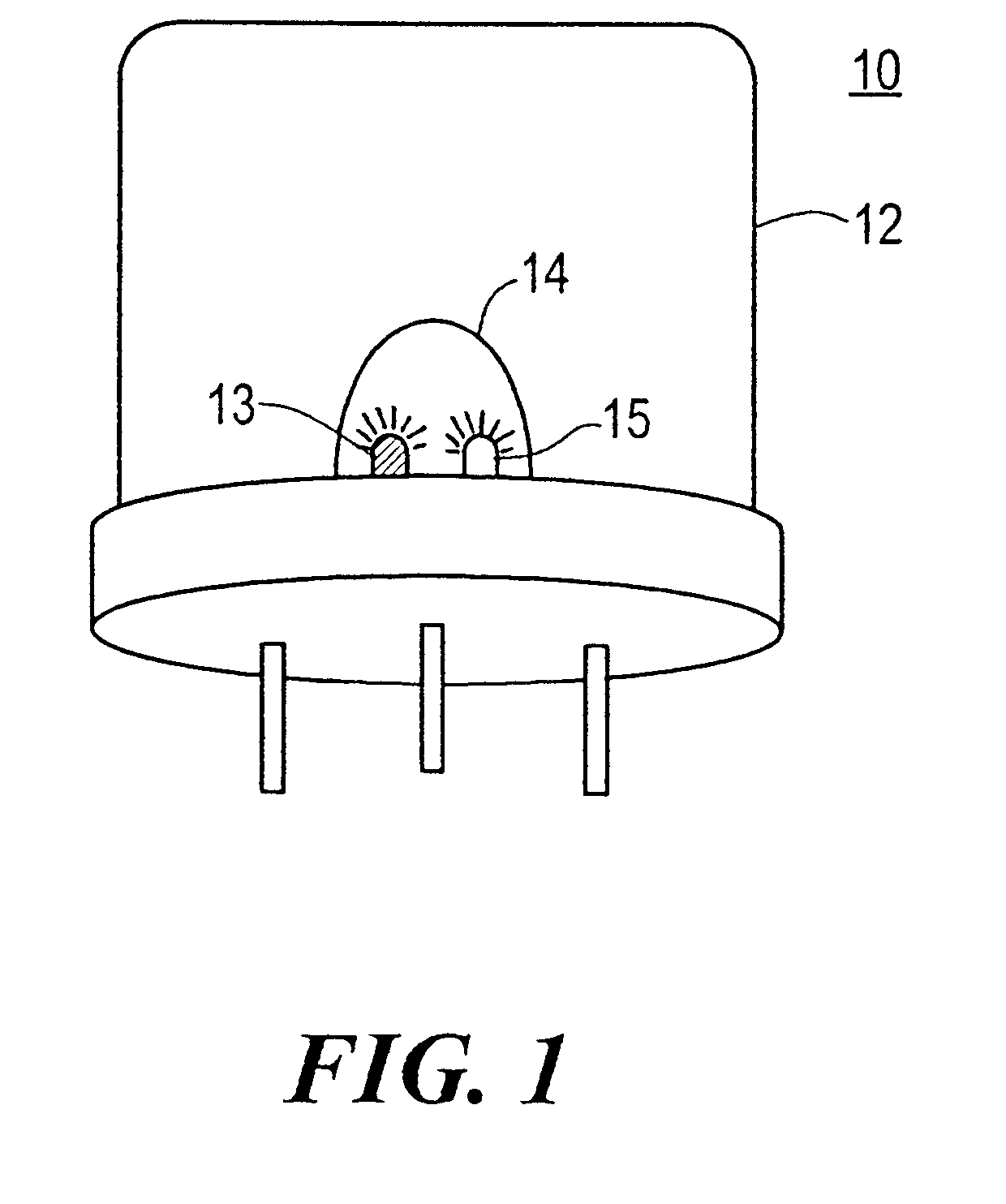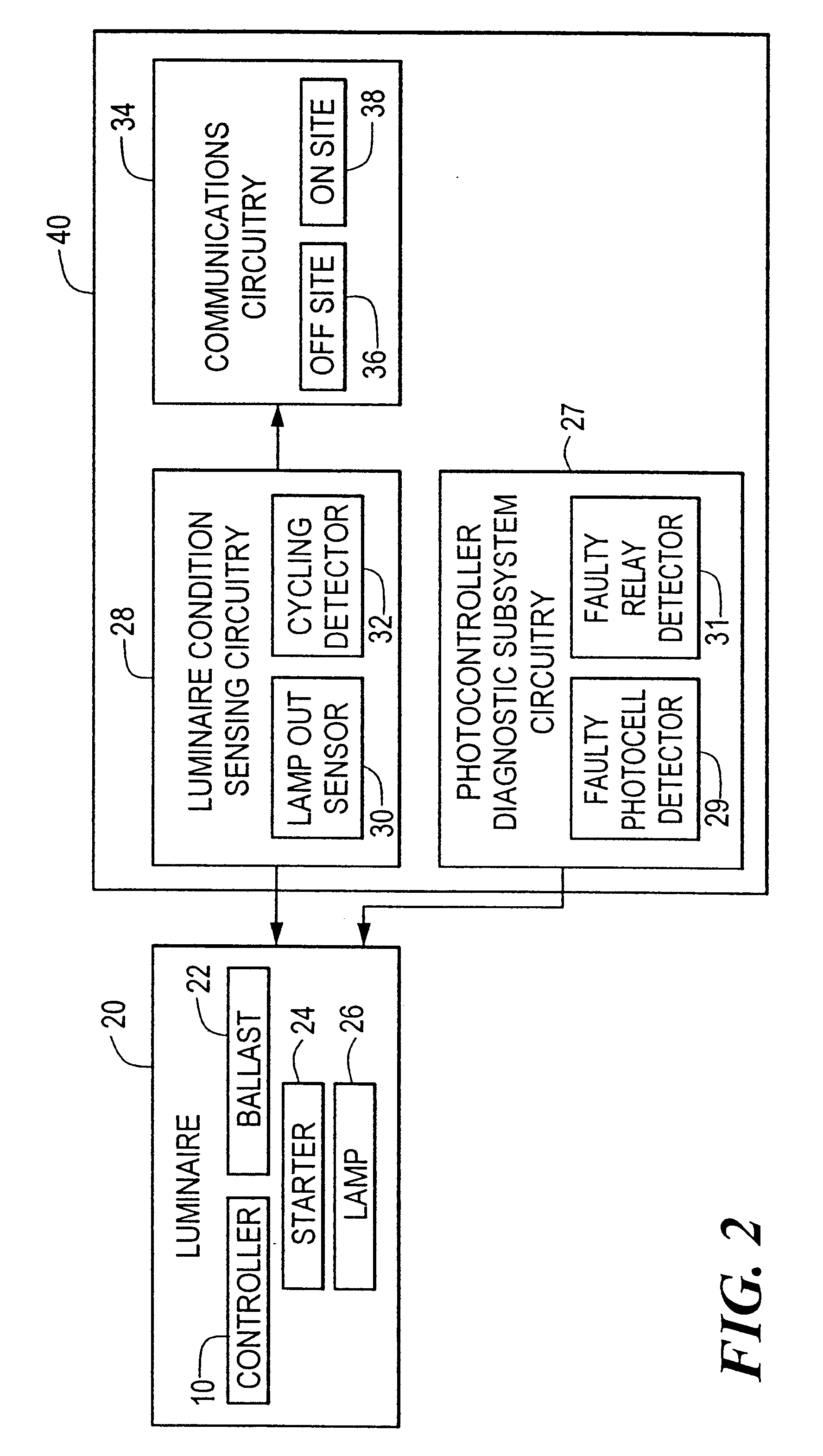Photocontroller diagnostic system
a technology of diagnostic system and photocontroller, which is applied in the direction of lighting apparatus, electrical equipment, light sources, etc., can solve the problems of severe problems such as safety hazards, wasting electricity, and servicing faulty photocontrollers, and achieve the effects of reducing rfi, saving electricity, and preventing premature failure of ballasts and starters
- Summary
- Abstract
- Description
- Claims
- Application Information
AI Technical Summary
Benefits of technology
Problems solved by technology
Method used
Image
Examples
Embodiment Construction
Photocontrol device 10, FIG. 1, includes thermoplastic, high impact resistant, ultraviolet stabilized polypropylene cover 12 and clear window 14 made from UV stabilized, UV absorbing, acrylic for the light sensor which resides on a circuit board within cover 12. Photocontrol device 10 is typically configured to fit an ANSI C136.10 receptacle but may be mounted in an ANSI C136.24 "button" package or other enclosure. Photocontroller 10 is typically mounted on a street light at the top of a light pole. Photocontroller 10 may also be used, however, in conjunction with other types of luminaries and other devices such as golf course water fountains.
The circuit board within cover 12 is configured to operate in accordance with the block diagram shown in FIG. 2 and the specific circuit diagram shown in FIG. 3. Microcontroller 54 shown in the circuit diagram of FIG. 3 is programmed in accordance with the flow charts shown in FIGS. 4, 5, and 6 in accordance with this invention, and transmitter...
PUM
 Login to View More
Login to View More Abstract
Description
Claims
Application Information
 Login to View More
Login to View More - R&D
- Intellectual Property
- Life Sciences
- Materials
- Tech Scout
- Unparalleled Data Quality
- Higher Quality Content
- 60% Fewer Hallucinations
Browse by: Latest US Patents, China's latest patents, Technical Efficacy Thesaurus, Application Domain, Technology Topic, Popular Technical Reports.
© 2025 PatSnap. All rights reserved.Legal|Privacy policy|Modern Slavery Act Transparency Statement|Sitemap|About US| Contact US: help@patsnap.com



